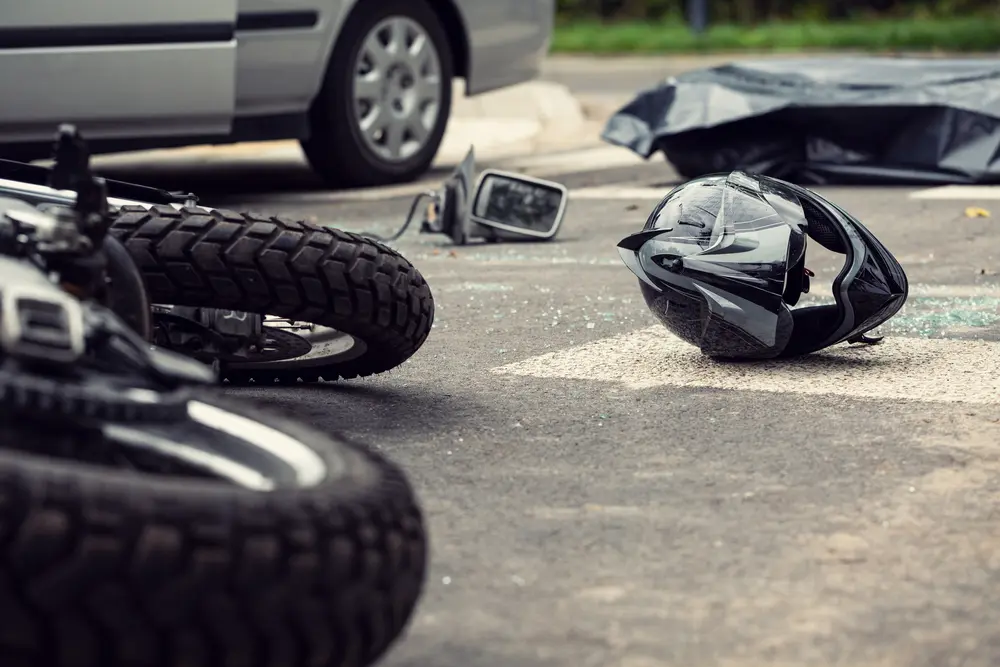Motorcycle accidents expose riders to forces that occupants of cars and trucks simply don’t have to endure, and while modern automobile safety features reduce crash fatalities, the primary “safety device” for a motorcyclist has remained unchanged over the years. You’ve got your helmet and your protective gear: and while these are better made now than they were 20 years ago, they still offer far less shielding than a vehicle’s enclosed framework. Let your personal injury lawyer in Casper, WY explain more about why these accidents are so deadly.
From Your Personal Injury Lawyer in Casper, WY: Why Motorcycle Accidents Are Deadly
Lack of Structural Protection
Vehicle passengers benefit from a metal cage designed to absorb impact energy. Seatbelts, airbags, and crumple zones further dissipate forces in a crash. Motorcycles provide none of this. A rider’s body directly endures the brunt force of collisions, even at relatively low speeds. This often leads to traumatic injuries or even ejection of the rider completely.
Mass and Momentum
Even large motorcycles weigh just a fraction of the average passenger car, making them vastly more vulnerable in collisions. The proliferation of SUVs and giant pickup trucks hasn’t helped, either. The principle of momentum dictates that when a moving motorcycle is struck by a vehicle with much more mass, the change in velocity throws the rider far more violently than car occupants due to energy transfer. There’s simply nothing that can be done about this reality of physics.
Instability and Exposure
Motorcycles, by their two-wheeled design, offer less inherent stability for maneuvering, braking, or avoiding road hazards. While experienced riders often develop exceptional skills, they are simply more exposed to dangers on the road, even with those skills considered. Everything from rough pavement to unexpected wind gusts can upset a motorcycle’s balance more readily than a larger vehicle.
Vulnerabilities on the Road
Beyond the raw physics, other factors make motorcycles more susceptible to serious accidents as well. For example, the smaller profile of a motorcycle makes them harder for drivers to spot, especially in blind spots, at intersections, in bad weather, or when merging. Drivers often claim they “simply didn’t see” the motorcycle, a problem which is much rarer in collisions between passenger vehicles.
Because motorcycles are smaller, many drivers find it difficult to accurately gauge their speed and distance when making turns or changing lanes. This misjudgment often leads to accidents as cars violate the motorcycle’s right of way, underestimating how quickly they’re approaching. And then there’s simple surface hazards. Surface irregularities like potholes, loose gravel, or even oil slicks create minor nuisances for car drivers yet can prove catastrophic for motorcyclists. Sudden swerves or braking becomes far more perilous when one’s vehicle relies on just two thin contact patches for control.
The Result: Deadly
Because of all the factors listed above, motorcycle accidents are far more deadly than other types of accidents. According to the National Highway Traffic Safety Administration (NHTSA), motorcyclists are around 16 times more likely to die in a crash per mile traveled compared to occupants of passenger cars. While motorcycles represent a relatively small percentage of total registered vehicles in the U.S., they account for approximately 14% of all traffic-related deaths. When motorcycle accidents occur, they are far more likely to result in the worst possible outcome.
The Severity of Motorcycle Accident Injuries
The lack of protection and the unique forces involved in motorcycle crashes don’t just lead to death. They can also lead to a far higher incidence of severe, debilitating, and life-altering injuries than those typically seen in car-on-car accidents.
Traumatic Brain Injuries (TBI)
Even with a high-quality helmet, the sudden blunt force of motorcycle accidents jolts the brain violently within the skull. Concussions, brain bleeds, and permanent neurological impairments are tragically common. These injuries often require long-term medical care, impacting the victim’s cognitive function, personality, and ability to live independently.
Spinal Cord Damage
The exposed nature of motorcycles puts riders at high risk of spinal cord injuries. These can range from herniated discs causing chronic pain to partial or full paralysis below the injury site. Spinal damage frequently requires extensive surgeries, rehabilitation, and results in life-altering disabilities for victims.
Road Rash and Amputations
Being thrown from a motorcycle often causes riders to skid along the pavement. Even with protective gear, severe abrasions known as “road rash” can penetrate into the deep layers of skin, requiring the kinds of surgeries and skin grafts normally only required by burn victims. In the most tragic cases, limbs are crushed or traumatically severed during motorcycle accidents, leading to amputation.
Broken Bones and Internal Organ Damage
Broken ribs, fractured leg or arm bones, and crush injuries to internal organs occur with alarming frequency, even in lower speed motorcycle collisions. These injuries may require multiple surgical interventions, extended hospital stays, and long, painful recovery periods.
Psychological Trauma
Motorcycle accidents often inflict emotional wounds alongside physical ones. Survivors may grapple with Post-Traumatic Stress Disorder (PTSD), anxiety, and a profound fear of resuming riding. These invisible scars must not be overlooked or minimized as part of the healing process, as they can be even more severe than when experienced by other victims due to the nature of these accidents, which can feel more immediate and personal to a motorcycle rider due to the lack of enclosure.
The Financial Toll
The medical costs associated with motorcycle crash injuries are staggering. Extended hospitalization, surgeries, rehabilitative therapies, and potential lifelong care create devastating financial burdens. Lost wages from the inability to work magnify this hardship, and victims can easily find themselves drowning in medical debt through no fault of their own. And since motorcycle accidents are so deadly, it’s often those left behind find themselves grieving a devastating personal loss while saddled with huge medical debts on a loved one’s estate.
Despite this, insurance companies and at-fault parties often work aggressively to minimize their liability. You deserve legal representation that evens the playing field and ensures your rights remain protected during this vulnerable time. Here’s where Ochs Law Firm can provide you with crucial assistance that can make all the difference:
Demonstrating Liability
Drivers often try to blame reckless riding, even when the evidence tells a different story. Your attorney will gather evidence from the accident scene, interview witnesses, and if necessary, hire accident reconstruction experts to clearly demonstrate how the other driver’s negligence or traffic violations caused the crash.
Insurance Negotiations
Negotiating with insurers is notoriously difficult, and they routinely offer low settlement amounts, hoping victims will accept out of desperation. An attorney skilled in these tactics will counter offers aggressively to ensure you receive the maximum compensation.
Bias Against Motorcyclists
Unfortunately, a subconscious bias sometimes exists against motorcyclists, painting them as reckless even when traffic laws are on their side. Experienced lawyers know how to counter these stereotypes during settlement negotiations and at trial.
If you or a loved one has been injured in a motorcycle accident in Wyoming, don’t let the aftermath overwhelm you. Contact us at the Ochs Law Firm for a personalized consultation to discuss your options. Let our team stand by your side, fighting for the justice and compensation you deserve during this difficult journey.







